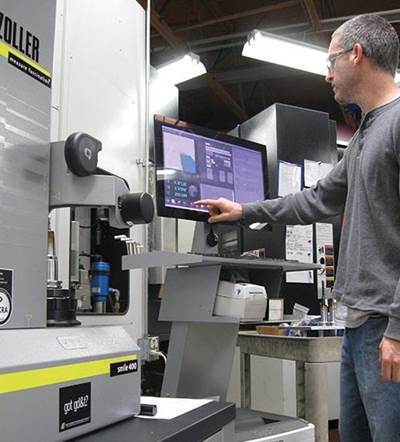The Esteem Incentive
Does your shop’s culture encourage knowledge sharing among employees?
Share



Takumi USA
Featured Content
View More
ECi Software Solutions, Inc.
Featured Content
View More



Add a five-axis machine tool, and certain aspects of the process might need to change. For example, different workholding or CAM software might be in order. As this article describes, tool measurement and toolholding deserve to be reconsidered as well.
Here is another aspect that might need to change: your shop’s culture. That new machine—actually, any machine that represents a step up—likely will succeed because some special employee learns how to use it effectively. If progress stops there because of some unspoken element of the shop’s culture, the machine’s value will be limited.
Next Intent experienced this. The company featured in the article linked above bought a new five-axis machine. The employee who mastered it was Senior Machinist Dale Bruce. When this machinist took a deserved vacation, the expensive machine sat idle.
Rodney Babcock, Next Intent CEO, says the failure here was not Mr. Bruce’s. Rather, the CEO now realizes that the company had failed in not defining training as one of the machinist’s expectations. Absent this instruction, employees took cues from a reward system that the company leadership had unintentionally allowed to develop.
Not all incentives take the form of payment. Another way employees are rewarded is through recognition, esteem and the sense of having a secure place in the organization. These social rewards are more valuable than most of us will admit. And in almost every shop, the default mode is to convey those rewards only for work that is tangible, meaning parts successfully delivered. In such a system, a machinist would be a patsy to give his time to training a rookie, because that machinist’s tangible output—and the resulting appreciation—would go down. He would basically be paying for the other’s training out of his own personal goodwill.
This makes no sense, says Mr. Babcock. Next Intent needs another employee to run the five-axis machine, so Next Intent ought to pay for the training—including paying a cultural price. Step one, and only step one, is to change the expectations.
Machinist Jesse Hesch has been identified as the next employee to learn the five-axis machine. Mr. Bruce was asked to have him ready to solo on the machine by a specific date. The senior machinist happily took the assignment.
A later step is to change the recognition, says Mr. Babcock. When the date is reached and the training is complete, Mr. Bruce ought to receive the level of public esteem he would have otherwise gotten for completing a particularly significant job for a customer.
Meanwhile, the truly difficult steps occur in between. Mr. Babcock and the rest of Next Intent’s leadership will have to remember that the culture is being changed. While training is underway, the output of the employee conducting that training will drop. Is the company ready for this? Will it keep encouraging this valuable employee even after the tangible measure of his value declines? This seems like a soft question. It’s actually a hard question, and one that will determine the extent of this shop’s capabilities in the future.
Related Content
The Power of Practical Demonstrations and Projects
Practical work has served Bridgerland Technical College both in preparing its current students for manufacturing jobs and in appealing to new generations of potential machinists.
Read MoreSame Headcount, Double the Sales: Successful Job Shop Automation
Doubling sales requires more than just robots. Pro Products’ staff works in tandem with robots, performing inspection and other value-added activities.
Read MoreIn Moldmaking, Mantle Process Addresses Lead Time and Talent Pool
A new process delivered through what looks like a standard machining center promises to streamline machining of injection mold cores and cavities and even answer the declining availability of toolmakers.
Read MoreCan Connecting ERP to Machine Tool Monitoring Address the Workforce Challenge?
It can if RFID tags are added. Here is how this startup sees a local Internet of Things aiding CNC machine shops.
Read MoreRead Next
Presetting Becomes Prevalent
Next Intent implemented presetting and shrink-fit toolholding when it bought a five-axis machining center, but it has since seen these resources deliver value to machining centers throughout the shop.
Read MoreRegistration Now Open for the Precision Machining Technology Show (PMTS) 2025
The precision machining industry’s premier event returns to Cleveland, OH, April 1-3.
Read More5 Rules of Thumb for Buying CNC Machine Tools
Use these tips to carefully plan your machine tool purchases and to avoid regretting your decision later.
Read More




































.jpg;maxWidth=300;quality=90)









